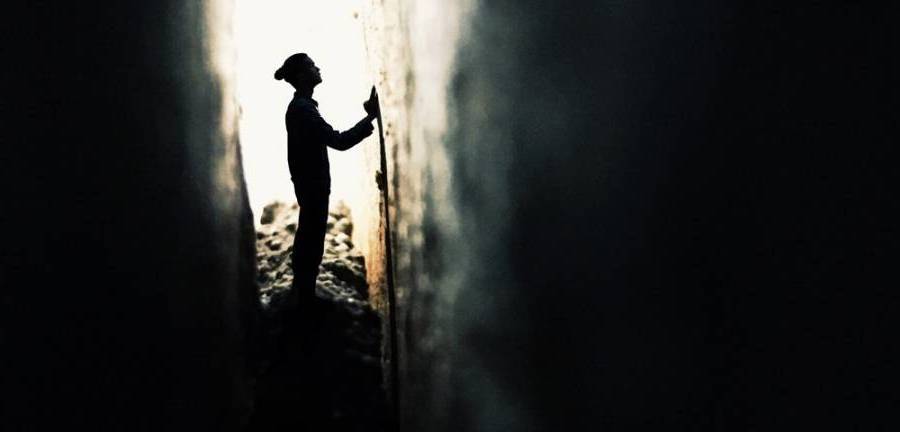Claustrophobia: The fear of closed and confined places. The triggers provoke the fear of what incidents could happen in those closed spaces.
Agoraphobia: The fear and anxiety provoked by crowded places. It arises the fear of being helpless in a crowd while facing anxiety or panic attacks.
Before we dig deep between the difference of both phobias, it is vital for us to understand that mental health is to be dealt with care and love. No problem on this earth can be solved with hate or force. Essentially both the phobias are quite different from each other, however, many people confuse them with one and other.
To understand the difference between claustrophobia and agoraphobia, you need to go through their terminological meanings thoroughly.
Difference claustrophobia and agoraphobia – Both of the phobia’s triggers differ vastly
The reaction towards those triggers could be similar, however, one is triggered by closed spaces while the other can be triggered in open spaces because of the crowd of people around.
Claustrophobic patients are triggered when they find themselves in confined or small rooms. They have a figure of anxiety, their brain is comprehending several different possibilities of trouble that can arise while they are in a confined room.
For them, it limits their sight on the world, so they assume trouble is on their way. Such people are not good with trusting their opportunities or the people around them.
Anxiety Is Not A Choice: You Can’t Just Tell Me to Let It Go!
Claustrophobia happens to people who tend to keep an eye on everyone, people who have lingering trust issues, people who have been cheated or deceived from a distance. Such incidents in one’s life can trigger claustrophobia.
Agoraphobic patients are usually antisocial or asocial, they don’t like crowds and are shy around people. They like to keep their circle small and their lives limited.
They don’t trust many people and have their own safe space which they don’t like to share with people. They are triggered when they are in markets, crowded bus stations, concerts, weddings and every other place which has a lot of people in a room.
Both phobias are related to the space of the room but keep in mind, claustrophobia has no connection with the number of people in the room, however, a correlation can be drawn between the two if symptoms and patients were taken into account.
The possible triggers for Claustrophobia
Claustrophobics often get anxious and fearful when around or are supposed to be using elevators, MRI scans, confined tunnels or passages. Whereas agoraphobics would most likely try to avoid places like amusement parks, concerts, clubs or airport where there is usually a huge crowd of people around.
Why does a claustrophobic patient avoid stairs and passages? It is the fear of being harmed or attacked, they feel as if there is no end to the journey and someone is going to harm them real soon.
While climbing the stairs, they might be wondering what trouble awaits at the end of the stairs or if there is a person with a knife waiting to kill them.
A claustrophobic patient might kill themselves if they were to be in a devil’s cage. Being in a closed room can trigger anxiety and cause damage to their brain, many patients were reported to have harmed themselves physically before they had a panic attack and they passed out.
Claustrophobia linked with panic disorder
Agoraphobia is said to be closely linked with panic disorder since it can trigger panic attacks due to the anxiety caused by being in a crowd. Correlation can be drawn between the two, since both are highly related and similar to one and another.
Panic attacks can be caused because of many reasons, it can be overwhelming depression or an anxiety attack. It is not the panic attack that hurts the most, it is what follows. The attacks can leave you dismantled, broken, feeling empty inside. This can lead to the worst disorders and psychological diseases.
If you are experiencing seizures and panic attacks, it is high time you consulted your doctor about it. Such things are not to be taken lightly and to be dealt with as soon as possible.
The size of the room for both phobias
An agoraphobic can bear being in a normal sized room with two people, however they can’t handle if a lot of people are present in the same room. On the other hand, claustrophobics would mostly be concerned about the size of the room regardless of the number of people present in it.
For an agoraphobic patient, the size of the room doesn’t matter much. The crowd in the room matters, they can have panic attacks and seizures even in an overcrowded concert or a market.
Even an assembly hall or an elevator filled with people can tick them off. Agoraphobic patients avoid such gatherings and try to limit their self from such social events.
For a claustrophobic patient, the size of the room matters a lot. They are concerned with how big or small the room is. They can easily be ticked off when in an elevator or any confined place.
They are more likely to get seizures when in an interrogation room, which can be the best example of confined rooms. They like their place to open and wide, which can help them look at any possibility of danger, or which can wear their fear off.
Claustrophobics are more concerned about medical procedures
As compared to agoraphobics, claustrophobics could go through marked anxiety at the times of procedures like MRI scans or even x-rays. Medical procedures can be very dangerous for a claustrophobic patient in their own head. MRI scans can scare the bejesus out of them, which is why they avoid such procedures.
They try to hide their fear which can quite evident to the people around them. Claustrophobia is more common than agoraphobia and many people experience fear of being in a confined place.
As a good human and a kind person, we should look out for such people and help them to be at ease. We don’t know the battles our mates are fighting and to be honest, we don’t need to know, in order to help them out, we just need to be selfless.
I Voluntarily Checked Myself In To A Psychiatric Hospital and This Is What I Learned














